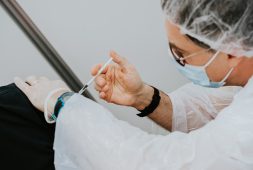Kava Plant Used In Traditional Medicine Will Be Subject Of New Study For Possible PTSD Treatment

In New Zealand, a substantial grant has been awarded to two Pacific Island scientists to conduct a pioneering study on the utilization of traditional kava preparations and kava ceremonies as a potential treatment for PTSD (Post-Traumatic Stress Disorder).
Their goal is to reestablish kava’s reputation, which was tarnished by pharmaceutical interests in the past, and explore its potential in helping individuals suffering from PTSD and trauma, including soldiers, veterans, police officers, and corrections facility staff.
Dr. Apo Aporosa of Fijan descent on his mother’s side, and Dr. Sione Vaka from Tonga were granted $1 million from the Health Research Council to combine kava drink with the traditional ceremony of conversation.
Dr. Aporosa told the NZ Herald, “I’m so stoked that Health Research Council has faith in us as a team to do this critically important work. It’s likely we’re going to spend a million dollars to prove what traditional Pacific knowledge has been trying to tell Europeans for the last 200 years.”
Kava, known by various traditional names, all referring to the root of the Piper methysticum plant, has been used across the Pacific islands. The root is traditionally prepared by mixing it with water and consumed for its subtle euphoric and sedative properties. This consumption is often accompanied by a “Talanoa” or what Dr. Aporosa is referring to as “talk therapy,” essentially a heartfelt and open conversation.
Their study will involve two groups of participants: one receiving the complete kava drink and Talanoa, termed “the full package,” while another group will solely experience the Talanoa, and a third group will only receive the kavalactones, the active component of the plant.
In 2009, the Cochrane Institute confirmed that kava was likely more effective than a placebo in treating anxiety. During that period, pharmaceutical and supplement companies rapidly isolated kavalactones and marketed them as a natural relaxant.
Ironically, in this isolated form, kavalactones were found to have mild toxicity to the liver, whereas in traditional consumption during the ‘Ava Ceremony’ in Samoan culture, or “Faikava’ in Fijian culture, this toxicity was not observed.
Like many indigenous populations, New Zealand’s Māori population community experiences higher levels of stress, trauma, and anxiety than the national average. The Health Research Council believes that the Kava ceremony represents a sensible approach to addressing this unmet need.
Dr. Aporosa said “We do know that talk therapy works for some PTSD cases,” adding that ‘talanoa is basically talk therapy, done while sitting on the floor rather than in chairs.’
“We know that kava has relaxant properties, that kava is a natural anti-anxiety medication, so we combine those two elements in a culturally influenced space, and we’ve got something here that’s unique,” he explained.
Dr. Aporosa understands the situation well due to both his Pacific heritage and his personal experience as a former police officer who left the force because of PTSD coming from his time on duty.
It was because of his experience traveling all over the world and speaking with former military and police officers that managed to help him get his Fulbright Scholarship to study the kava ceremony in Hawai’i, which is another island culture that uses this particular plant.
His aspiration is to demonstrate just how well it works during the trial then release a free e-book about the ways to perform the ceremony and intervention. The hope is that he allows people that need it free access to this particular knowledge about traditional Pacific medicine.



